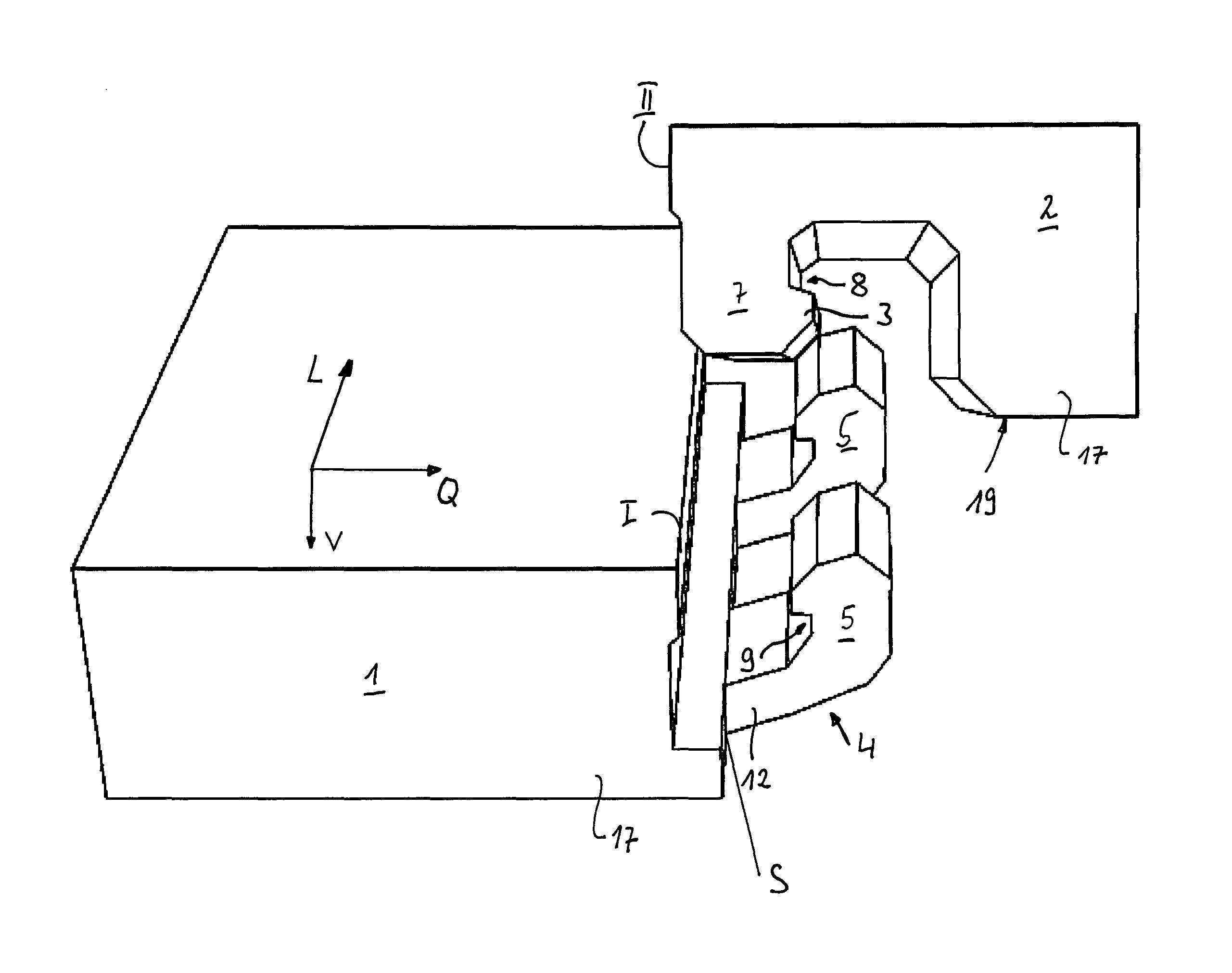Panel, especially floor panel
a technology for floor panels and panels, applied in the field of floor panels, can solve the problems of poor quality, insufficient stiffness of these connections, and complex profiling of side edges, and achieve the effect of improving the profiling of hook elements and ensuring reliable interlocking
- Summary
- Abstract
- Description
- Claims
- Application Information
AI Technical Summary
Benefits of technology
Problems solved by technology
Method used
Image
Examples
Embodiment Construction
[0039]The aforementioned described profile connection has the advantage that it is machined in one piece out of the core material, does not require any outside parts and thus fewer production tolerances need be maintained than otherwise. As a result of the higher stiffness, several forces can be transferred in the vertical direction. The profiling is also suitable for thin panels and tools which can move only on one side, preferably plunge cutters, are necessary for production. Production takes place essentially as described in DE 10 2007 015 048 A1. For producing the undercuts 8, 9 the hook elements 4, 5 are machined by means of a vertical tool which is not shown. The slots 13 which run obliquely to the longitudinal axis L of the panel are produced by cutting tools which plunge into the core 17 in the vertical direction V while the panel 1 is moving past the machining station (not shown). Since the plunging cutting tools are oblique to the transport direction, they must be ground s...
PUM
 Login to View More
Login to View More Abstract
Description
Claims
Application Information
 Login to View More
Login to View More - R&D
- Intellectual Property
- Life Sciences
- Materials
- Tech Scout
- Unparalleled Data Quality
- Higher Quality Content
- 60% Fewer Hallucinations
Browse by: Latest US Patents, China's latest patents, Technical Efficacy Thesaurus, Application Domain, Technology Topic, Popular Technical Reports.
© 2025 PatSnap. All rights reserved.Legal|Privacy policy|Modern Slavery Act Transparency Statement|Sitemap|About US| Contact US: help@patsnap.com



